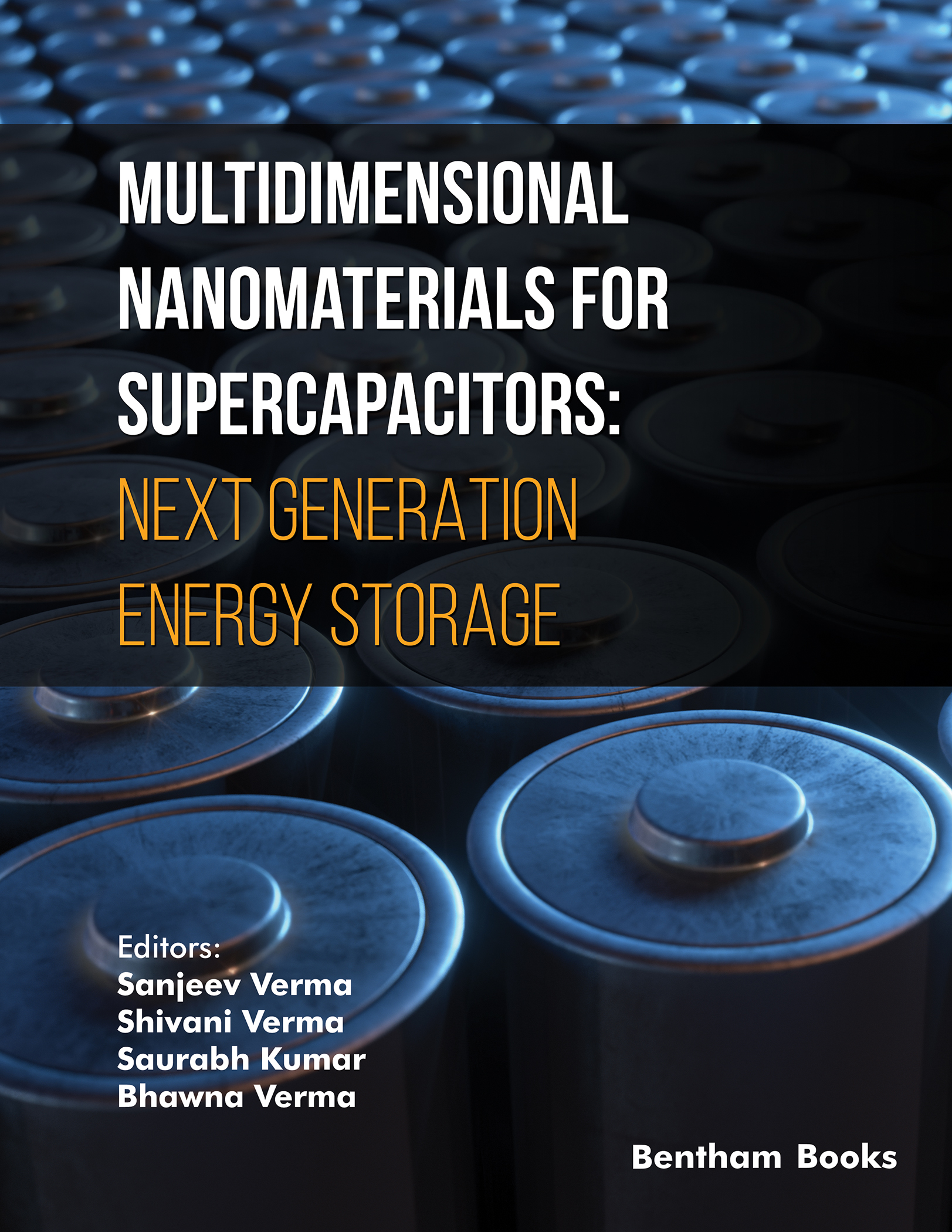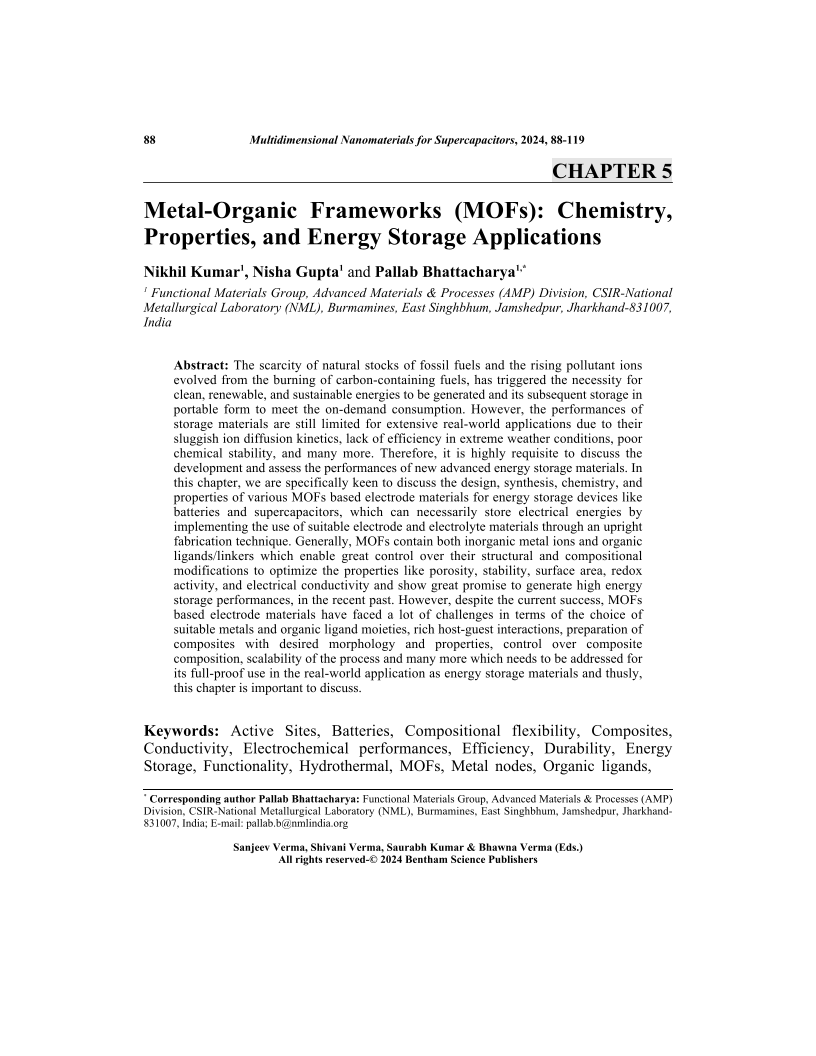- Home
- Books
- Multidimensional Nanomaterials for Supercapacitors: Next Generation Energy Storage
- Chapter
Metal-Organic Frameworks (MOFs): Chemistry, Properties, and Energy Storage Applications

- Authors: Nikhil Kumar1, Nisha Gupta2, Pallab Bhattacharya3
-
View Affiliations Hide AffiliationsAffiliations: 1 Functional Materials Group, Advanced Materials & Processes (AMP) Division, CSIR National Metallurgical Laboratory (NML), Burmamines, East Singhbhum, Jamshedpur, Jharkhand-831007, India 2 Functional Materials Group, Advanced Materials & Processes (AMP) Division, CSIR-National Metallurgical Laboratory (NML), Burmamines, East Singhbhum, Jamshedpur, Jharkhand-831007, India 3 Functional Materials Group, Advanced Materials & Processes (AMP) Division, CSIR-National Metallurgical Laboratory (NML), Burmamines, East Singhbhum, Jamshedpur, Jharkhand-831007, India
- Source: Multidimensional Nanomaterials for Supercapacitors: Next Generation Energy Storage , pp 88-119
- Publication Date: May 2024
- Language: English
Metal-Organic Frameworks (MOFs): Chemistry, Properties, and Energy Storage Applications, Page 1 of 1
< Previous page | Next page > /docserver/preview/fulltext/9789815223408/chapter-5-1.gif
The scarcity of natural stocks of fossil fuels and the rising pollutant ions evolved from the burning of carbon-containing fuels, has triggered the necessity for clean, renewable, and sustainable energies to be generated and its subsequent storage in portable form to meet the on-demand consumption. However, the performances of storage materials are still limited for extensive real-world applications due to their sluggish ion diffusion kinetics, lack of efficiency in extreme weather conditions, poor chemical stability, and many more. Therefore, it is highly requisite to discuss the development and assess the performances of new advanced energy storage materials. In this chapter, we are specifically keen to discuss the design, synthesis, chemistry, and properties of various MOFs based electrode materials for energy storage devices like batteries and supercapacitors, which can necessarily store electrical energies by implementing the use of suitable electrode and electrolyte materials through an upright fabrication technique. Generally, MOFs contain both inorganic metal ions and organic ligands/linkers which enable great control over their structural and compositional modifications to optimize the properties like porosity, stability, surface area, redox activity, and electrical conductivity and show great promise to generate high energy storage performances, in the recent past. However, despite the current success, MOFs based electrode materials have faced a lot of challenges in terms of the choice of suitable metals and organic ligand moieties, rich host-guest interactions, preparation of composites with desired morphology and properties, control over composite composition, scalability of the process and many more which needs to be addressed for its full-proof use in the real-world application as energy storage materials and thusly, this chapter is important to discuss.
-
From This Site
/content/books/9789815223408.chapter-5dcterms_subject,pub_keyword-contentType:Journal105

